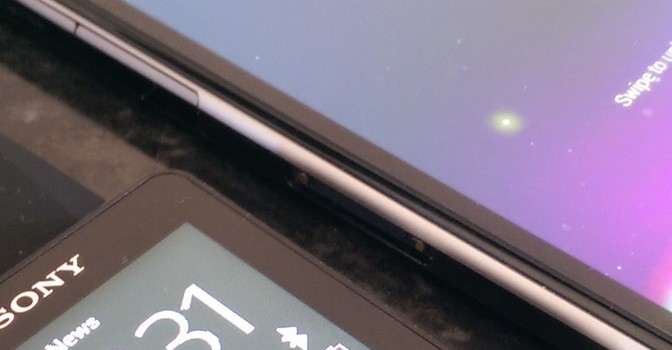Our last couple of articles have been focusing on the latest in a trend of ‘smart’ technology – smart watches. A common trend that follows with each of these pieces of technology is the dependency on a phone device to adapt or maintain it. In today’s article, we’re going to take a break from reviews to discuss just how this system works, and why it’s both a negative, and positive attribute of the new devices.
To keep things clear, we’re only going to be discussing the two smart watch systems that we have previously reviewed, mostly for contextual clarity – the Samsung Gear 2 and the Sony SmartWatch 2.
1. Syncing your device
The first thing you’re going to be approached by with your prospective new system after taking it from its box is ‘syncing’ (a clipping of “synchronize”, or “synchronization”) both your smart watch and your smart phone together. This will allow ease of access for your device, and open up the wide variety of possibilities available for your device.
Models of smart watch will vary depending on what device you have. The majority of smart watches will focus their syncing process with ‘BlueTooth’. In the case of the Samsung Gear 2, all you had to do was download the application from the Google Play store (For Samsung, the application is called “Gear Manager”) and it would synchronize itself automatically with the watch. This is a great way to deal with the syncing system, and also the simplest.
Now, as mentioned in our SmartWatch 2 review, the Sony device uses an NFC system to synchronize phone with watch. For this to work, you’ll need to slide the back of the watch with the back of your phone (If it has NFC enabled, if not, BlueTooth sensing should be available to you) and wait for a sound to play. After this has been sounded, instructions on the phone should guide you to the appropriate application. On the Sony Xperia I was using at the time, the application was called Smart Connect. This would encourage you to download further applications that will help the management of your watch device.
2. Managing Applications
Now comes the fun part. With the relevant application downloaded, you can browse a special version of the devices application store (for the Sony SmartWatch 2, it was a modified version of the Google Play Store) and find applications you want to include. Both the Gear Manager and Smart Connect application centres provided a list of applications already used, and applications it suggests that can be downloaded with the press of a finger; social networking applications like Facebook, Twitter and Instagram seem to be popular here. The Gear Manager also provides extra information relating to the camera, and has a whole host of applications that can assist with picture editing, though it is suggested that you do any photo editing on the phone, with a bigger screen and more options to work.
Another benefit of having your phone synced with your watch is the notification feature with calls. Not only can you download applications that help you track calls, but you can also get applications that increase the amount of notifications you receive, whether alarms can be put on the system, etc.
It is worth bearing in mind here that depending on the product you have purchased, certain applications will already be on the device, along with any device-specific applications, such as the Gear 2’s pedometer. The Sony SmartWatch 2 seems much more reliant on the downloading of external applications, such as a Music Player, Pedometer, E-Mail and weather applications. Applications needed always fall to personal preference.
3. Finishing Touches
Depending once again on device, you will have other options that can add more customizable features to the device, specifically the Gear 2 once again. The Smart Connect centre does have some interesting features, such as the ability to change the style of clock you want to have (analog, digital, funky designs, etc) but the true customisation lies with the Gear Manager, where you can download a much larger variety of applications, including clocks that have interactive features (I downloaded a really awesome ‘Matrix’ clock that made the watch much more personable), alongside applications that can provide extra utility, fix broken items of the device, and help with day-to-day activities.
The Samsung Gear 2 boasts a price around double that of the SmartWatch 2, so it’s worth bearing in mind that these extra customisation facilities do come with a hefty price. The SmartWatch 2 provides a much more limited array of options, but these options are nevertheless a way for you, the user, to create a unique watch.
It’s worth noting here that, before you get started, or even consider getting a smart watch, you must remember that your phone is an integral part of the watch system. Any manipulation of key settings must be achieved through the phone itself. The problem that is faced here is the necessity, therefore, of having a smart watch in the first place, when you are using your phone for everything regardless. In all honesty, it must come down to personal preference. Before buying ANY of the smart watch devices, I recommend popping into your local tech store and giving them a try. They have an acquired taste, and one that shouldn’t be worth risking that much money on. Give it a try, and you may just find that a smart watch is the way forward for you.
Special thanks to Laura at Citizen Relations and Jaycee at Kazoo for providing us with the review units/
Discover more from Matt Porter, The Gadget Man - AI, Technology News and Reviews
Subscribe to get the latest posts sent to your email.

